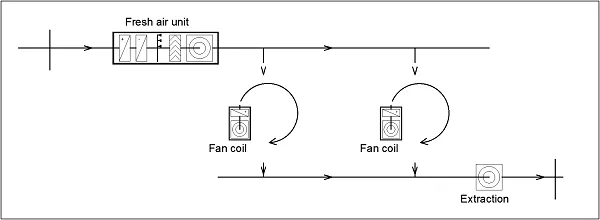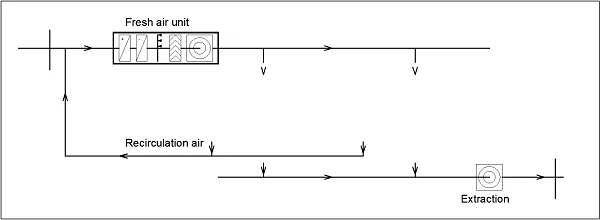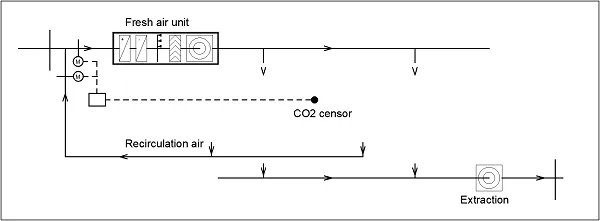
The vital importance of fresh air
The vital importance of fresh air
– by Albrand Velthuizen – 24/07/20
It seems like poor ventilation could be a key factor in the spread of COVID-19. Even the World Health Organization (WHO) doesn’t rule this out. Lack of fresh air can lead to a range of problems, like headache, fatigue and respiratory issues. Time to show how proper ventilation is a basic part in our systems.
Open letter
On the sixth of June a group of 239 scientists have written an open letter claiming that COVID-19 can be transmitted through the air and urging the international community to implement control measures (including improved ventilation) to prevent airborne transmission.
Although more research is needed, the World Health Organization (WHO) stated in a recent press conference that it does not rule out the possibility of airborne transmission for COVID-19. With this in mind, let’s take a look at our designs and how we make sure that every cabin has its own fresh air.
Implementing fresh air on your vessel
How fresh air is included in our design depends on the HVAC system which will be installed. When calculating the amount of fresh air needed, we use the guidelines mentioned in the ISO publication which are for 28.8 m³/h per person. Below we dive into three of the most common systems and how we implement fresh air into it.
1) Fan coil system
Vessels with limited space often feature a fan coil system which provides local air treatment. A fan coil unit is simply a recirculation unit which uses the air in the cabin for heating and cooling. Although the air is comfortably cool, it is not fresh air.
The fresh air is provided by a separate air handling unit based on the ISO guidelines and the number of persons occupying the room.

2) All-air system
Vessels with an all-air system have one or multiple central air handling units that take care of all the air treatment for multiple cabins in a given area of the vessel. These units handle much more air than fan coil systems.

Fresh air amounts are based on the recirculation rate. A common rate is 50%, which indicates that 50% of the total air is recirculated while the other half is fresh air.
3) CO2 detector
Some vessels have large public areas where people are constantly coming and going, like the public areas on cruise vessels or ferries. These rooms are so large that they often have a single air handling unit to treat their air. Equipping such a system with a CO2 detector saves a lot of energy.

The more people are gathered in the space, the higher the CO2 amount will be and the more fresh air will be needed. The signal is redirected to a system of valves which control the balance between fresh and recirculated air.
The race for energy efficiency
Ventilation is as old as indoor environments – opening two windows on opposite sides of a building to let in fresh outside air and get rid of the damp inside air full of dust and germs is an ancient technique. Clean air fills our lungs with oxygen and gives us energy. Some may think that fresh air is synonymous with comfort – but cool and fresh air can be two different things.
Cracking a window when it’s 32°C with a relative humidity of 70% outside is no fun. The purpose of an HVAC installation is to bring comfort to the indoor environment no matter the outside conditions.
Most people are comfortable in temperatures around 20-22°C, relative humidity of 50% and a wind speed of no more than 1.5 m/s. Fresh outside air therefore usually needs to be treated. The more fresh air used, the bigger the cooling coil, heater and humidifier required. There is a balancing act between fresh air and energy efficiency. Naturally, we will keep an eye on the latest developments.
WHO press conference: https://www.who.int/emergencies/diseases/novel-coronavirus-2019
Open letter: https://academic.oup.com/cid/article/doi/10.1093/cid/ciaa939/5867798
Albrand Veldhuizen | Commissioning Engineer
Albrand has been working at Heinen & Hopman since 2006. He has worked himself up to the position of Commissioning Engineer and nowadays he is stationed at one of the largest yacht builders in Germany. During his many years working onboard numerous luxury yachts, he has developed a great expertise in HVAC systems for superyachts.